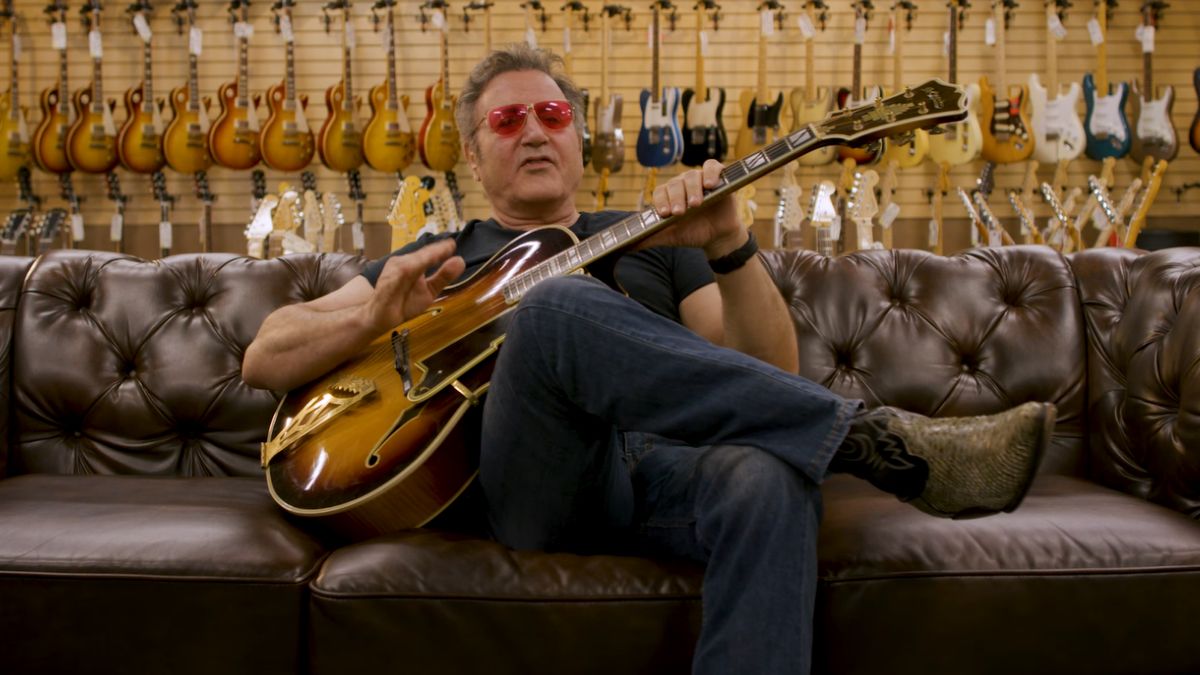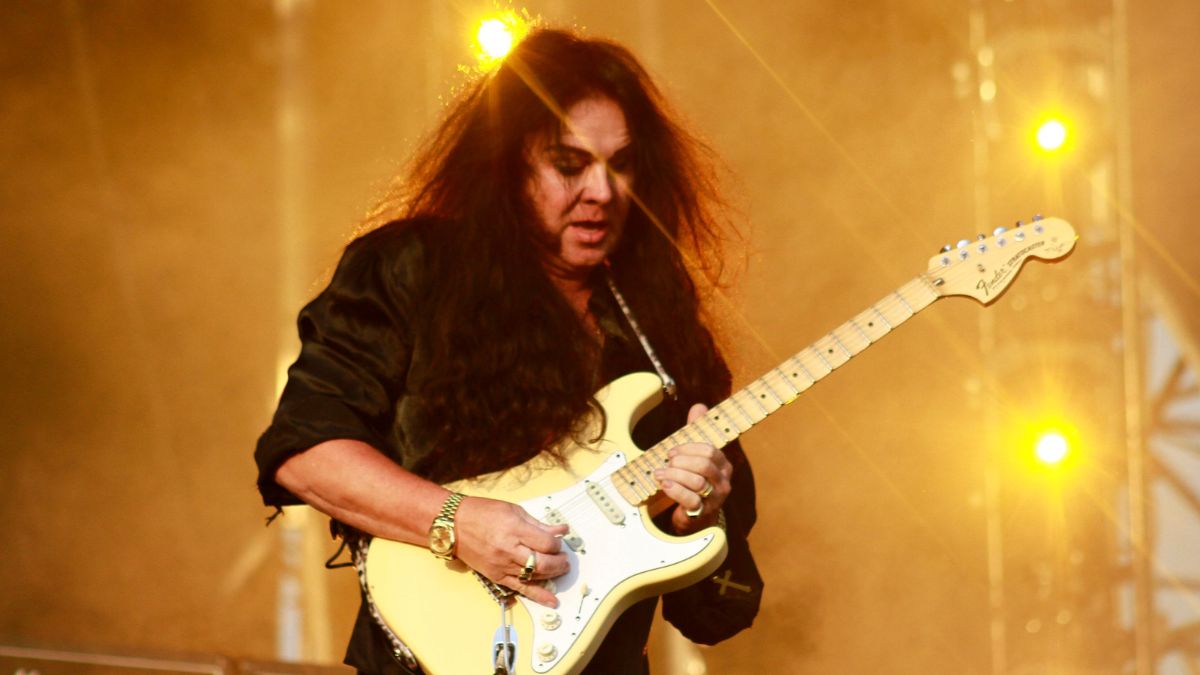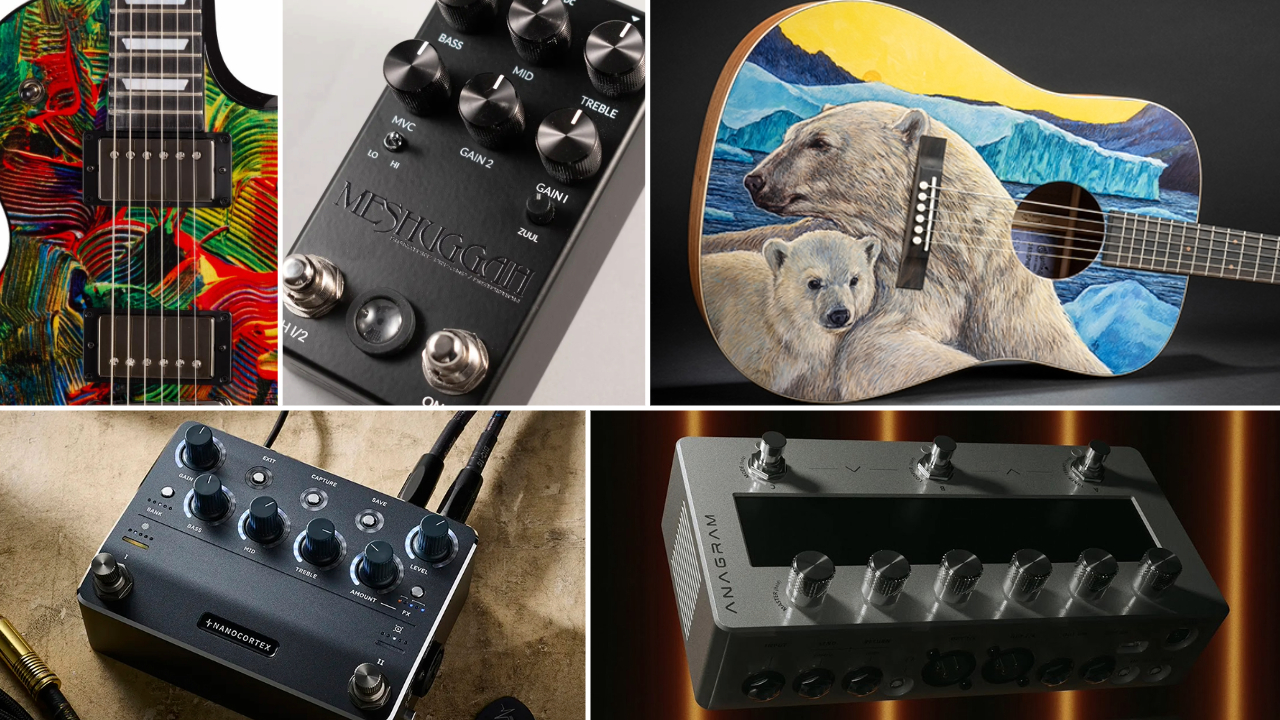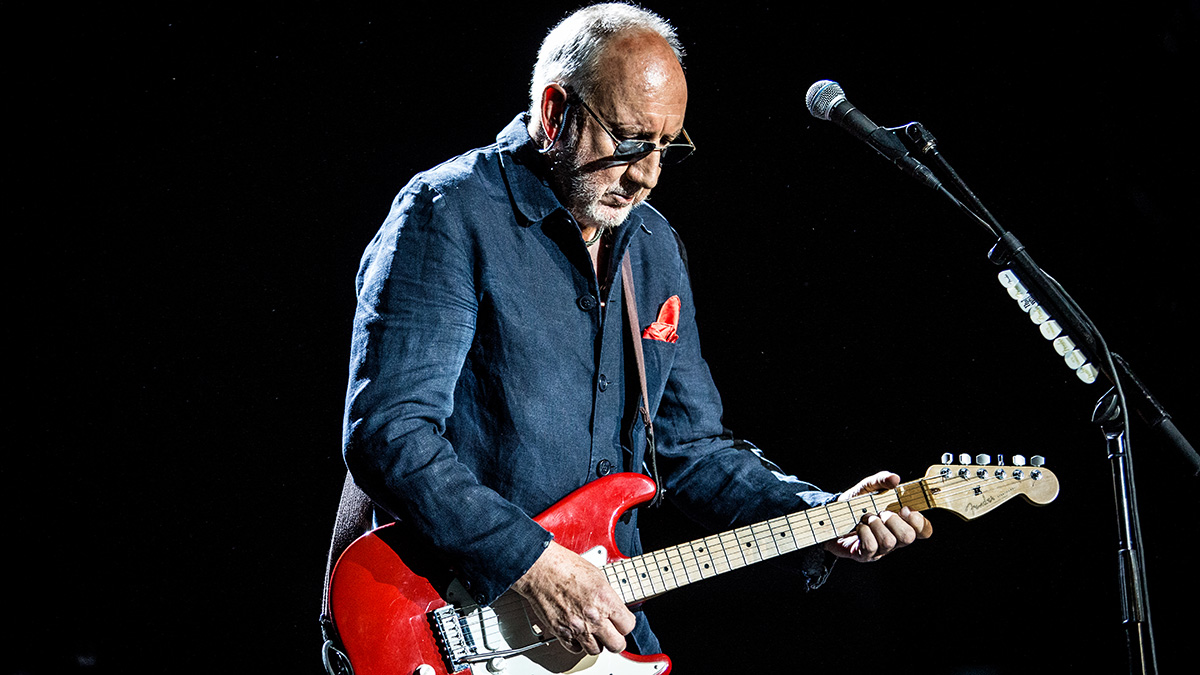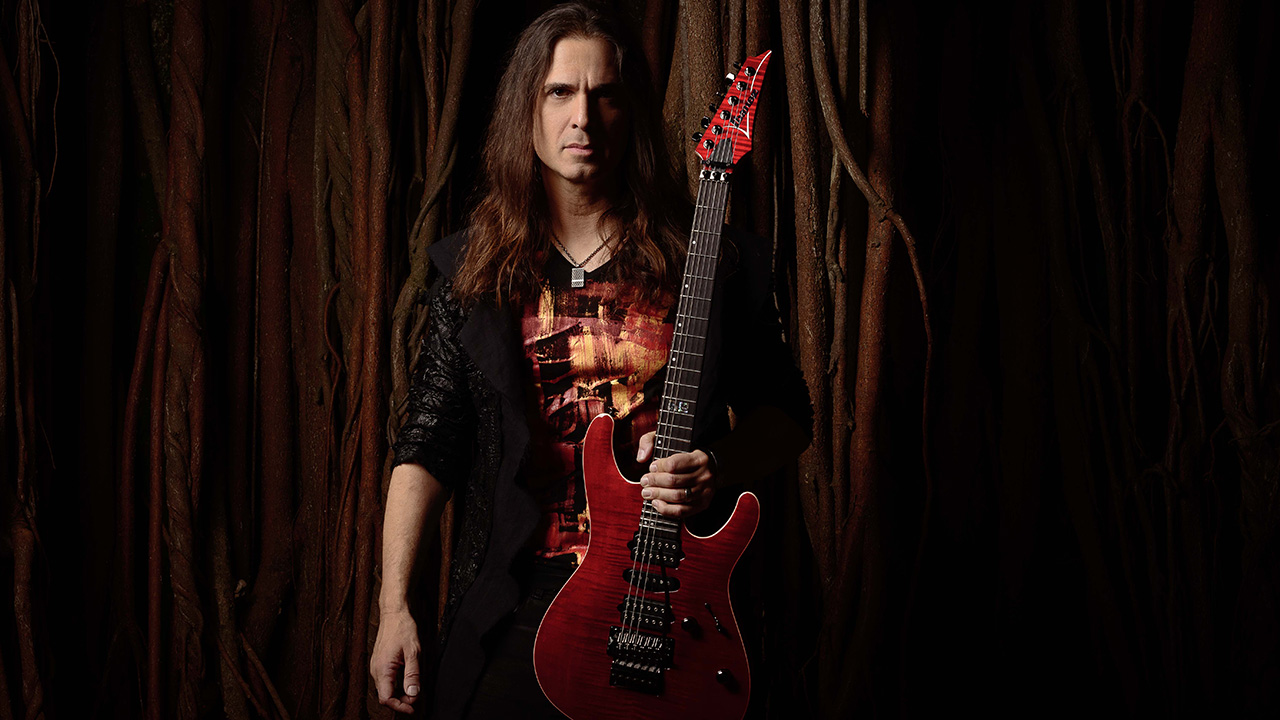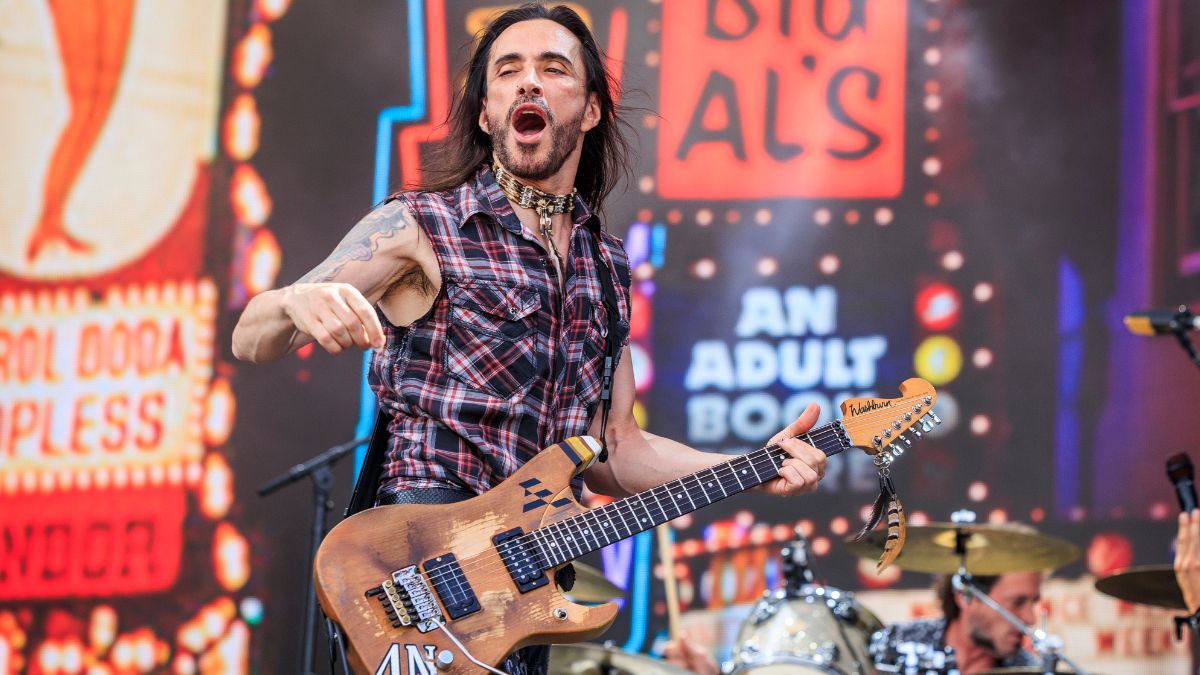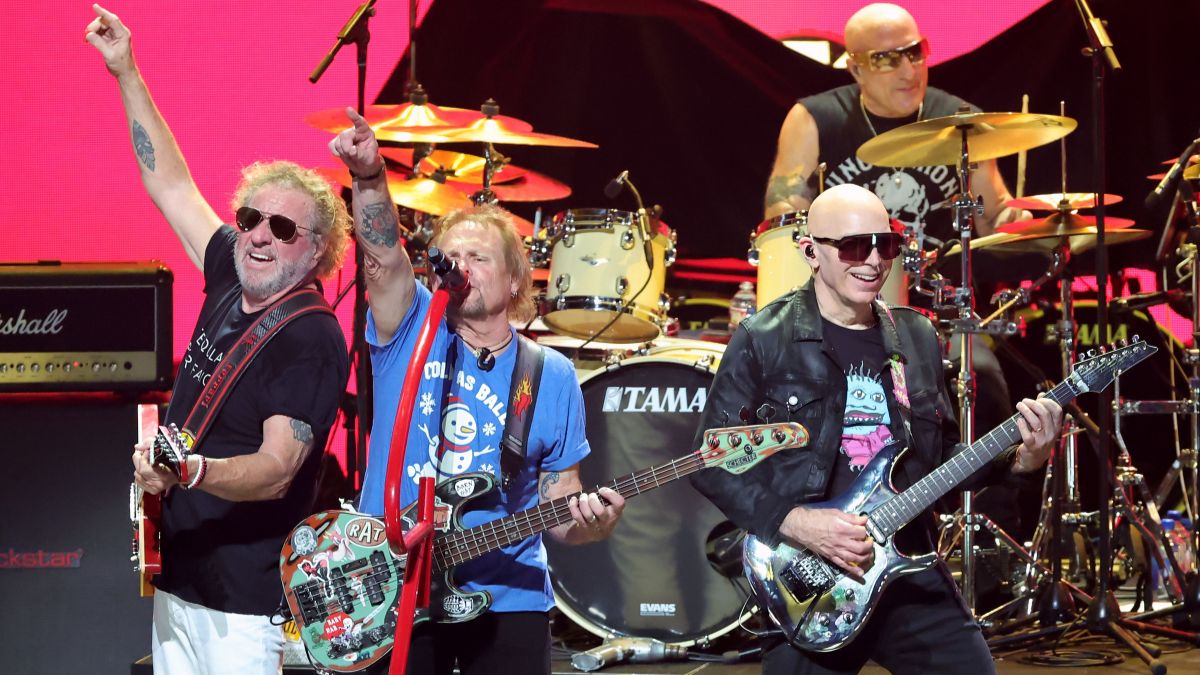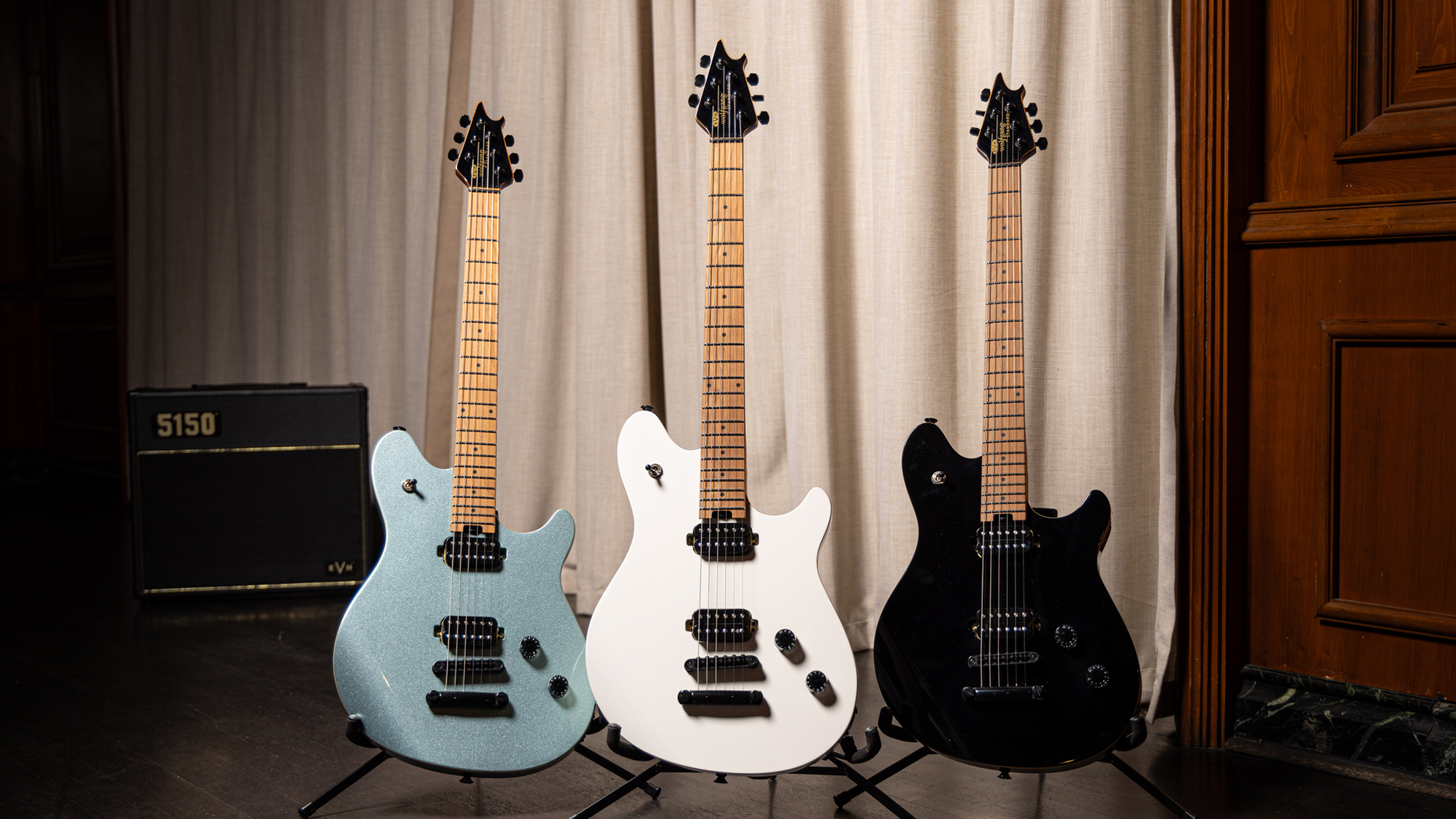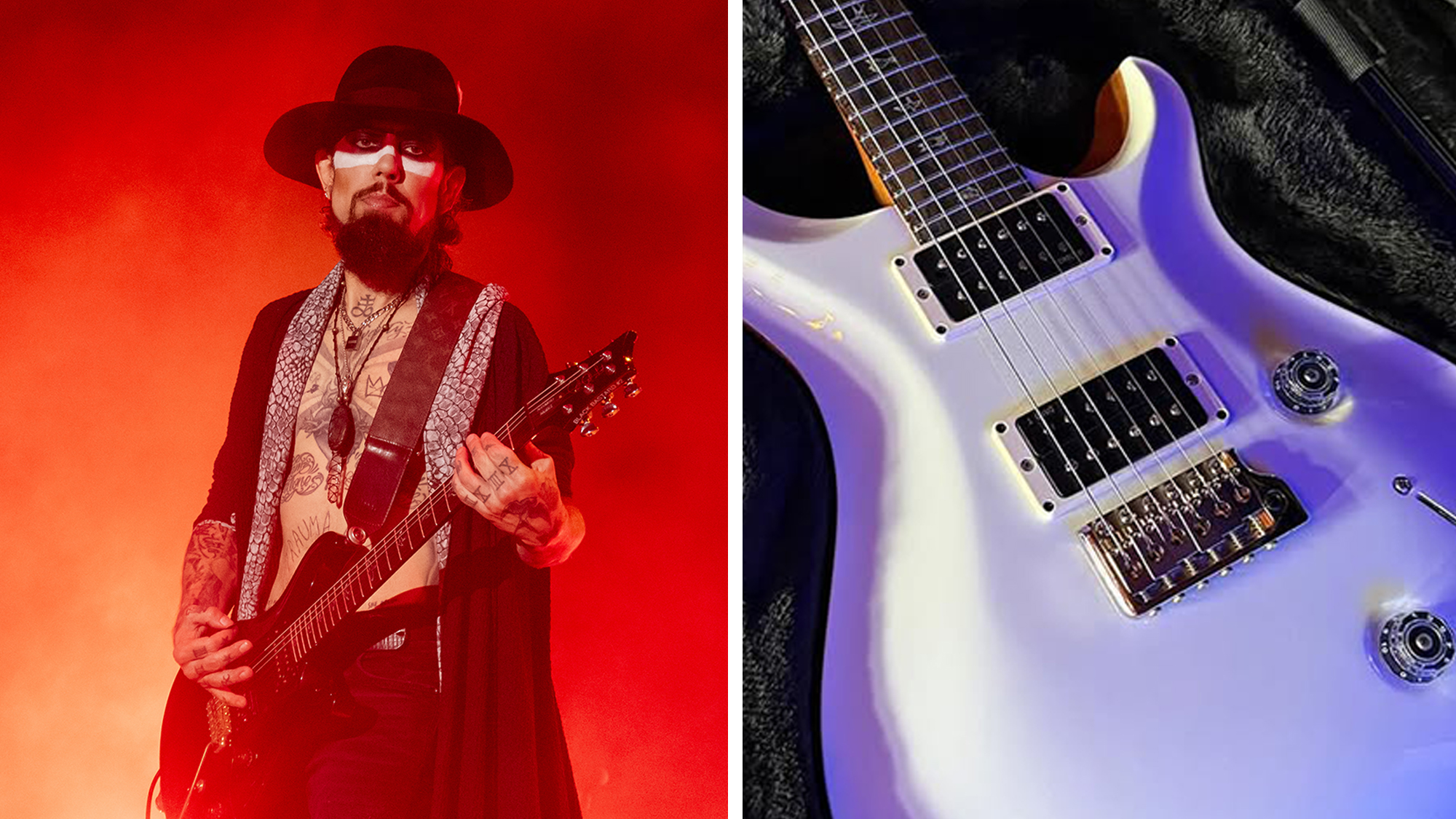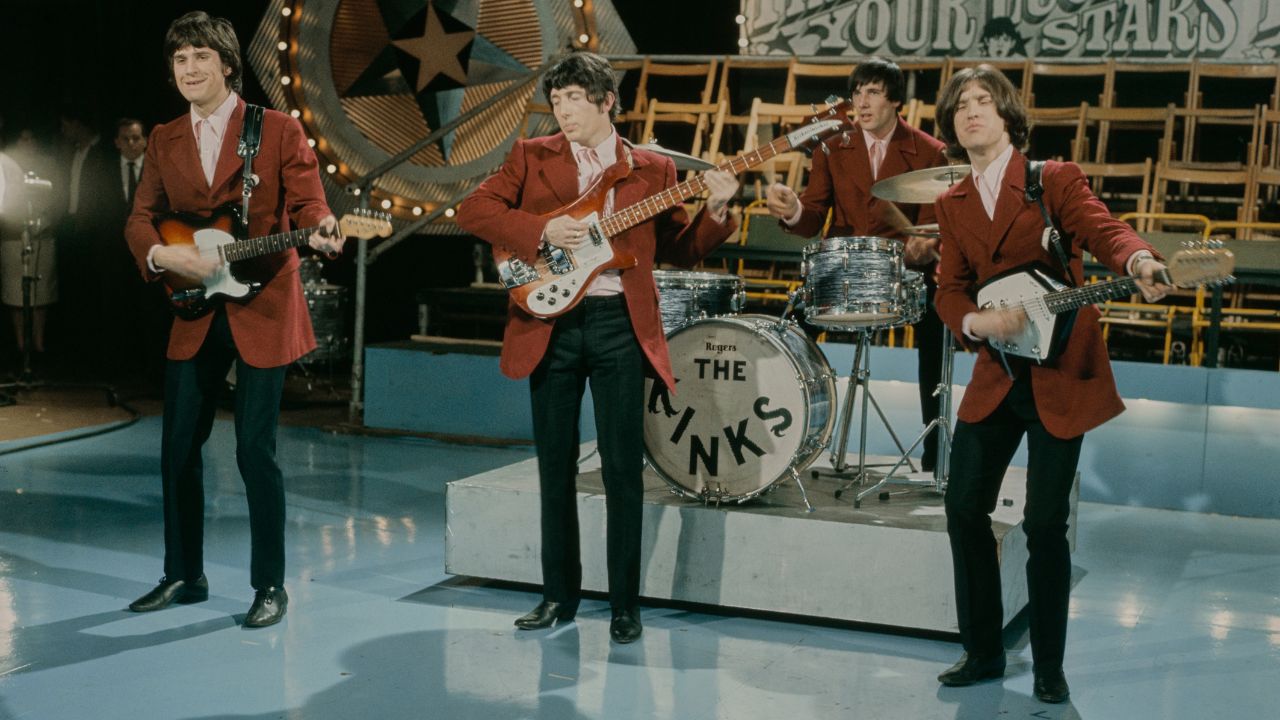Dave Mustaine Discusses Megadeth's Ferocious New Album, 'Dystopia'
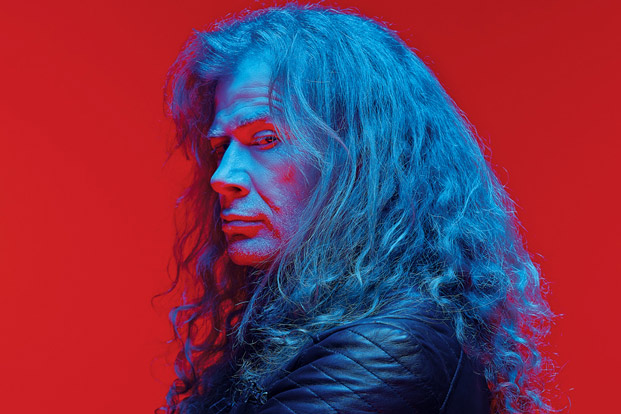
It’s a warm December day in Los Angeles, and Megadeth leader Dave Mustaine is, well, happy.
Which is putting it mildly. “Right now I think [Megadeth bassist] David Ellefson and I are feeling like school kids who scored a bunch of bags of Halloween candy,” he says with a hint of genuine glee in his voice.
The reason for his elation? There are several, actually. First and foremost is Megadeth’s new album, Dystopia. It’s their 15th studio effort overall, and it’s a veritable metal monster.
The common parlance is to say that a band’s most recent record is their best; in Megadeth’s case this would be a hard sell, given that they’ve produced some of metal’s most classic platters, like 1986’s Peace Sells…But Who’s Buying?, 1990’s Rust in Peace and 1992’s Countdown to Extinction.
That said, it would hardly be a stretch—and it’s more likely the truth—to say that Dystopia is their fiercest and most guitar-crazed offering in at least two decades. From the jackhammer, staircase riffing of “The Threat Is Real,” to the labyrinthine, “Hangar 18”–esque solo tradeoffs of the title track, to the dizzying six-string shredding wrapped around the instrumental “Conquer or Die!” Dystopia shows Megadeth reclaiming their rightful position as metal’s tech-thrash masters.
Furthermore, much of that instrumental insanity comes courtesy of the two new players who contributed to Dystopia alongside Mustaine and Ellefson: Brazilian virtuoso Kiko Loureiro, the former Angra guitarist who has now joined Megadeth full time, and Lamb of God drummer Chris Adler, who helped out on the recording sessions. What’s more, Adler, who Mustaine calls “one of the best drummers I’ve ever played with,” will be joining Megadeth on their upcoming U.S. tour in support of the album.
Below, we present an excerpt of our interview with Mustaine—our April 2016 cover story. For the full feature and more, check out the new issue of Guitar World at newsstands and the Guitar World Online Store.
Get The Pick Newsletter
All the latest guitar news, interviews, lessons, reviews, deals and more, direct to your inbox!
Since it was first announced that Kiko would be the new guitarist in Megadeth you’ve been praising him as a player—at one point you even called him the best guitarist you’ve ever had in the band. Now that you’ve finally released some new music, we’re all getting the chance to hear how he fits in. Judging by his performance on Dystopia it’s apparent that his style really works for what Megadeth does.
Absolutely. And the great thing about the music finally coming out is that everybody gets to hear this firsthand—and I don’t look quite so much like a braggadocio! Kiko just shows up and he lets the music do the talking, which I love. Plus, he’s a great guy to be around. He’s refreshing. And because he’s relatively unknown people are getting to experience him in a whole bunch of different ways. So I’m glad he’s playing with me.
In the past you’ve been open about the fact that you often tell your guitarists what to play in their solos. Was that the case with Kiko when it came to his leads on the album?
Pretty much. But in general I’ve always believed in the idea of, there’s your way, there’s my way and there’s our way. You should try to have as much of a democratic approach as possible—but sometimes when you write a piece of music you have something in your head you want to hear, and as much as you give freewill and license to the other players to do what they want, if they don’t know exactly what you want, it won’t translate.
Were there other musicians you were considering for the guitar slot?
There were so many guys. And really good guys, too. But they were mostly younger players who had a little bit of a different kind of image than what Megadeth is about. If you have a guy that has really long hair in a band where everybody has really short hair it just looks different, you know? And if you have a guy covered in tattoos in a band where nobody has any tattoos it looks different. So there were several times where we had a guy that had a lot of the pieces that we wanted…but not all of them. And I made it real simple. I was looking for three things: Attitude. Ability. Appearance. If you look cool, if you play cool, and if you think cool, then you must be cool!
Before you settled on Chris and Kiko, you made an attempt to reunite the early Nineties Megadeth lineup with Marty Friedman and Nick Menza. You’ve taken some hits in the press and from fans for it not working out, but from the way I understand it, it was David Ellefson, not you, who was pushing for it in the first place.
Yes. Totally. And David has been kind enough to come to my rescue, because a lot of people have been trying to make me out to be the bad guy, which I wasn’t. So the reunion thing didn’t happen, and David came out and said, “Look, this was my idea. Dave [Mustaine]’s been really great about trying to make it happen and being supportive about it, but this was what I wanted.”
So you would have done it.
Well, put it this way: I love my partner David and I respect him enough to have given it a try. What I would have preferred was that Shawn [Drover] and Chris [Broderick] weren’t hurt in the process, and that they would have been able to have a much happier transition into their new group and us into this version of Megadeth.
Getting back to Dystopia, one thing that can be said about it is that it’s a heavy, riffy record—certainly more so than your last one, Super Collider. Would the album have gone in the same direction whether you had had Chris and Shawn, or Nick and Marty, or Chris and Kiko playing on it?
Well, I had 10 of these songs already written, so the record was getting some equilibrium before any of this stuff happened. It was starting to become apparent how the music was going to sound. And actually, some of these riffs came from folders that I’ve had since Nick and Marty were in the band. Also, Chris and Shawn were still there when we first started noodling around with some of them. So it’s been coming together for a while.
Do you have any favorite guitar moments on the record?
I think the ending of “Dystopia” is really beautiful. I love the way it continues to shift gears, and how the horsepower just increases exponentially. But I also like some of the things where we’re really reaching with the guitar approaches, like in “The Threat Is Real” or “Poisonous Shadows,” where there’s an oriental approach with the scales and stuff like that. And in other places there are Hungarian scales, there are Hindu scales, Arabian scales, all kinds of things. And you know, even when Kiko would tune up a little bit before he was ready to do his solos, some of the things he would play were so mind-bending, so mindboggling. It was the kind of stuff that makes guitar players weep.
For the full interview and more, check out the new issue of Guitar World at newsstands and the Guitar World Online Store.
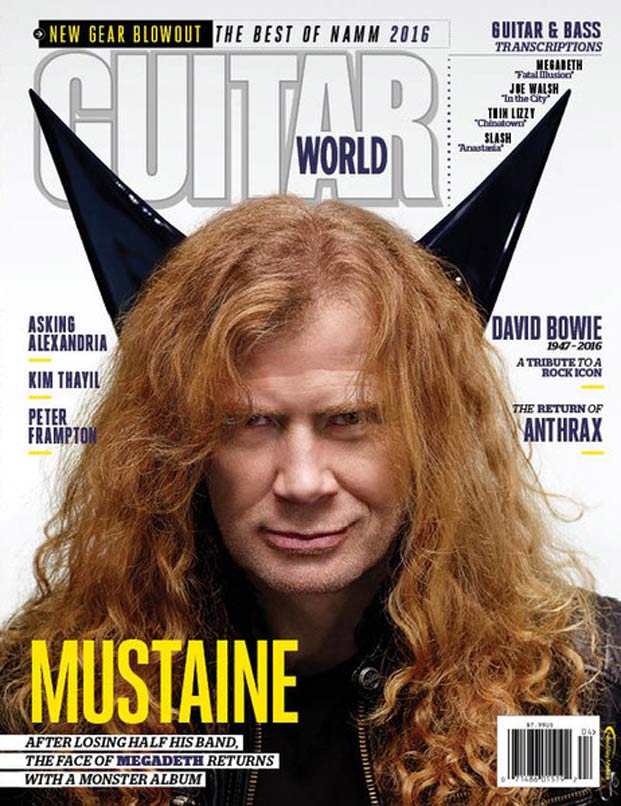
Rich is the co-author of the best-selling Nöthin' But a Good Time: The Uncensored History of the '80s Hard Rock Explosion. He is also a recording and performing musician, and a former editor of Guitar World magazine and executive editor of Guitar Aficionado magazine. He has authored several additional books, among them Kurt Cobain: Montage of Heck, the companion to the documentary of the same name.

